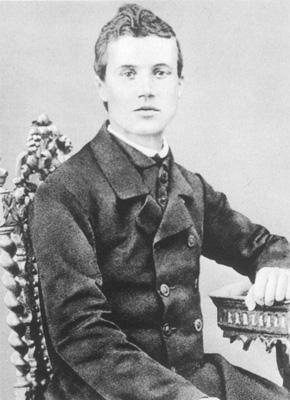
Life of St. Pius X
Index - 1 - 2 - 3 - 4 - 5 - 6 - 7 - 8 - 9
THE CHAPLAIN OF TOMBOLO (November 1858-May 1867)
He went to Tombolo as a chaplain; Tombolo is a parish in the province of Padova situated in the boundary of the diocese of Treviso, not far from Cittadella, the first community of the diocese of Padova.
The church, dedicated to apostle St. Andrea, attracted the members of the congregation who lived in a territory controlled economically and politically by the count Giovanni Cittadella.
The inhabitants of Tombolo were most brokers and cattle dealers.
Although the relative welfare due to the private enterprise and to an only market, also the poverty had its incidence, considering that the new chaplain began to give to the poorest people the wheat he belonged by right because he was a priest. He felt some people, who needed money, like his own brothers, with all the economical and legal problems that this caused.
His parish priest was Father Antonio Costantini (Cortina d’Ampezzo, 1821-Tombolo, 1873) and he sometimes substituted him because of his precarious health.
Father Antonio Costantini was a parish priest who followed him as he had to direct to the future responsibilities all the priests he was put under the care: the new priest talked to him and consulted with him, and so he acquired a pastoral experience.
In Tombolo he began to write sermons, holy speeches and catechist education (all that he made up was collected in five volumes, kept now in the library of the seminary of Treviso).
In particular, under Father Costantini’s leadership, he acquired an oratory reputation: he was ironically called “cappellanus de cappellanis” because, made famous in the diocese of Treviso, he was called in several parishes, and he played in the cathedral a panegyric about blessed Enrico from Bolzano, a secondary patron saint of Treviso.
In his first community he devoted himself to the charity, and he forgoed the clothes and some vital necessities.
He had his providential and fatalistic conception of the poverty and the wealth: in the famous funeral speech uttered in occasion of Elisabetta Viani’s funeral rites (24th November 1863), he expounded his theory about the relationship between the poverty and the wealth. According to it a social ransom for the poor was possible only permitting to the riches to enter the Kingdom of Heaven.
His day was full of activities: he didn’t sleep too much, he was engaged and omnipresent, and he substituted the parish priest during his illness.
He was called “the perpetual movement” for his incessant activity in the parish and outside. He was always in touch with the people in the morning, and in the evening he taught choral chant and he was available to teach reading and writing to the illiterates, who were numerous at that time.
At the end of his day, he studied St. Thomas’s works, the Holy Scripture, the canon law (that was only a mixture of some legal rules accumulated with the passing of time).
He went to bed and he slept for four hours.
He didn’t invest any earnings of his: the witnesses assure, at the canonical cases, the continuous charity of their chaplain: he was sure that the Providence would always sustain and guide him, and he gave all that he had, by incurring debts. To pay them he began to go to “via Monti di Pietà” in Cittadella and Castelfranco Veneto (Treviso), where he pawned his silver watch. He was considered a saint.
For all these human characteristics, Costantini prophesied: ”We will see him as a parish priest in one of the most important parishes of the diocese, and then we will see him with red socks... and then... we will see!”.
According to the historian Father Angelo Marchesan, who wrote one of the most thorough Sarto’s biography (which was also corrected by the Pope or his secretary), he never forgot the period of Tombolo, so important for his human and priestly. ”Tombolo was the real training of Father Giuseppe Sarto’s ecclesiastical career, and Costantini was the teacher, rich in doctrines and experiences"[17].
In 1867 he was invited by his bishop, Father Federico Maria Zinelli (Venice, 1805-Treviso, 1879), to participate in an examination to assume his pastoral responsibility of one of the five parishes which were vacant. On 21st May 1867 he was elected the parish priest of Salzano, in the province of Venice, but in the diocese of Treviso, the most important parish among the others.
When he left Tombolo, all the people missed him.

Giuseppe Sarto new priest. He was consecrated as a priest on 18th September in the cathedral of Castelfranco Veneto (Treviso) by Father Giovanni Antonio Farina, the bishop of Treviso. Two months later he went to Tombolo (Padova) as a parish priest.
[17] MARCHESAN A., “Pio X in his life and his words”, Benziger & Co. S. A., Einsiedeln, 1904-05, page 110.
Index - 1 - 2 - 3 - 4 - 5 - 6 - 7 - 8 - 9
Last update: 21.06.2009
Questo sito è stato creato da Ermanno Baschiera in collaborazione con queste persone.